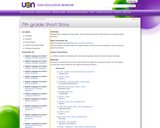
Students will be reading and writing myths. They will follow the structure of short stories and eventually publish their work.
- Subject:
- Fine Arts
- Material Type:
- Lesson Plan
- Unit of Study
- Provider:
- Utah Education Network
- Date Added:
- 11/01/2017

Students will be reading and writing myths. They will follow the structure of short stories and eventually publish their work.

Students form literature circles, read "Esperanza Rising" or "Becoming Naomi Leon" by Pam MuĐoz Ryan, use a Critical Thinking Map to discuss social issues, and use a class wiki.
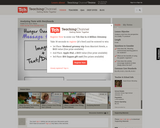
Using a reality tlevision show format, students are given thems from a certain novel and create storyboards upon which to create the reality TV show. Prior to the lesson , the teacher pulls the stick(s) from certain cups that are labeled with each of the ELA standards. This way students are focused on what standrd they are working on that class period.

This powerpoint contains guided reading questions as students read Jack London's Call of the Wild. It provides geographical background, images, and discussion questions to guide students in their reading.
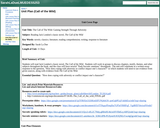
This unit plan outlines and provides all resources to study Jack London's Call of the Wild. Within this resource you will fine detailed daily lesson plans including handouts, discussion questions, and grading rubrics.
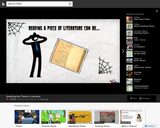
In this lesson on Theme, students will first view the video on Theme to activate background knowledge. Then, students will complete a story map to practice the skill of identifying the term theme.

In this 8 eight-week module, students explore the experiences of people of Southern Sudan during and after the Second Sudanese Civil War. They build proficiency in using textual evidence to support ideas in their writing, both in shorter responses and in an extended essay. In Unit 1, students begin the novel A Long Walk to Water (720L) by Linda Sue Park. Students will read closely to practice citing evidence and drawing inferences from this compelling text as they begin to analyze and contrast the points of view of the two central characters, Salva and Nya. They also will read informational text to gather evidence on the perspectives of the Dinka and Nuer tribes of Southern Sudan. In Unit 2, students will read the remainder of the novel, focusing on the commonalities between Salva and Nya in relation to the novel’s theme: how individuals survive in challenging environments. (The main characters’ journeys are fraught with challenges imposed by the environment, including the lack of safe drinking water, threats posed by animals, and the constant scarcity of food. They are also challenged by political and social environments.). As in Unit 1, students will read this literature closely alongside complex informational texts (focusing on background on Sudan and factual accounts of the experiences of refugees from the Second Sudanese Civil War). Unit 2 culminates with a literary analysis essay about the theme of survival. Unit 3 brings students back to a deep exploration of character and point of view: students will combine their research about Sudan with specific quotes from A Long Walk to Water as they craft a two-voice poem, comparing and contrasting the points of view of the two main characters, Salva and Nya,. The two-voice poem gives students an opportunity to use both their analysis of the characters and theme in the novel and their research about the experiences of the people of Southern Sudan during the Second Sudanese Civil War.
Find the rest of the EngageNY ELA resources at https://archive.org/details/engageny-ela-archive .
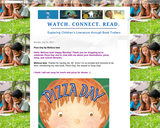
John Schumacher (aka Mr. Schu) is a blogger, a part-time lecturer at Rutgers University, and the Ambassador of School Libraries for Scholastic Book Fairs®. You could say every day is a giant book party for this teacher-librarian! In fact, Library Journal named him "The Xtreme Librarian" for the high level of exertion – along with some gears and stunts – he uses to get kids reading, and Instructor Magazinenamed him a Cool Teacher for redefining what it means to be a teacher-librarian.
This resource is a link to his Blog. The Blog hosts children's book trailers he has created. He explains "how" he created them.
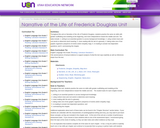
Throughout this unit on Narrative of the Life of Frederick Douglass, students practice the same six skills with greater scaffolding and modeling at the beginning, and more independence toward the middle and end. The tasks include: 1. writing to an essential question to access background knowledge; 2. using context clues and root words to determine word meaning; 3. close reading with the aid of a glossary; 4. taking notes one of two graphic organizers (sequence of events and/or empathy map); 5. re-reading to answer text dependent questions; and 6. summarizing the chapter.

This lesson will assess student understanding, comprehension, and knowledge of the book, The Outsiders.

This is an animated short that functions as both a persuasive text warning consumers about the dangers of factory-produced food and a commercial for Chipotle Mexican Grill. In the video, our central character, a scarecrow, realizes the horrors of factory produced food products and can no longer work for the food corporation. The scarecrow decides to start a new food business afresh - producing foods made from fresh, sustainable ingredients.This wordless animation requires students to infer the author's central message and purpose, find evidence to support their ideas, and discuss the role of characterization and setting in the theme. Please note: this is a primary text resource. Guidelines for implementation in the classroom can be found in the "Guidance for Teachers in Using this Resource" section.

Remix this template to upload your WISELearn Grant lesson and unit plans into WISELearn

Remix this template to upload your WISELearn Grant lesson and unit plans into WISELearn

This lesson was created to go with the book, Stealing Indians by John Smelcer. It is a book that closely aligns with what life was really like for Indian children after being sent to boarding schools against their will.

Remix this template to upload your WISELearn Grant lesson and unit plans into WISELearn